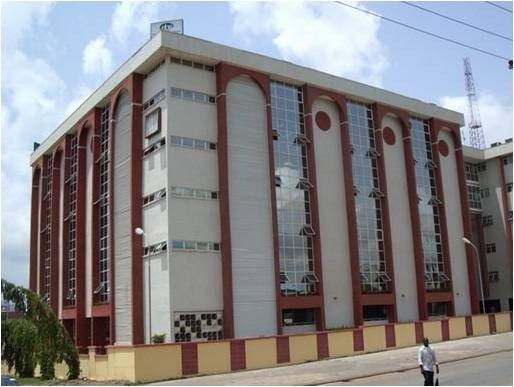Helped By Strong Q4, Non-Oil Rise, Nigeria’s 2018 GDP Grows 1.93%

Nigeria’s National Bureau of Statistics (NBS), on Tuesday published the GDP rate for Q4 2018, indicating a growth of 2.38%, which was within the range envisaged by analysts, who insist it could be better, given the country’s higher population growth rate.
According to in 2018Q4, “aggregate nominal GDP stood at N35,230,607.63m, which is higher than N31,275,354.08 million recorded in Q4 2017, a nominal growth rate of 12.65%. For 2018, nominal GDP was therefore recorded at N127,762,545.58m, representing a nominal growth rate of 12.36% when compared to N113,711,634.61million recorded in 2017.”
Reacting in a tweet, Seun Onigbinde, Co-founder of @BudgITng, a civil society group noted that although a sign of progress, 1.93% is not where Nigeria should be, blaming “decades of addiction to oil-induced growth (now) haunting us. The real shame is the weak non-oil sector growth. This is where all energies should go.”
The 2018Q4 growth was helped by a 2.7% notch in non-oil GDP, raised Nigeria’s GDP for 2018 to 1.93% from 0.82%, faster than 1.81% reported in 2018Q3. Nigeria’s non-oil GDP climbed from 2.32% on the back of increased non-oil revenue, at a time oil GDP remained negative, even while improving from -2.91% to -1.62% within the period.
Growth drivers of the non-oil sector which enabled it contribute 92.94% to real GDP in 2018Q4, slightly higher than the 92.65% seen in Q4 2017, were: Information and communication, Transportation and Storage, Arts and Entertainment, Agriculture as well as Manufacturing. Consequently, in 2018, “annual contribution (of the sector) was recorded at 91.40% against 91.33% in year 2017. Key performing activities on an annual basis include Transport, Information & Communication, Electricity, Water, as well as Arts & Entertainment.”
Q4 daily oil production was reported at 1.91m barrels per day (mbpd), lower than the 1.95mbpd recorded in the corresponding period of 2017, or 1.94mbpd in 2018Q3. Nigeria is yet to attain its peak production level of 2.5mbpd attained in 2016Q1. The peak in 2018 was 2.0mbpd recorded in Q1.
In all, “the Oil sector contributed 7.06% to real GDP in Q4 2018, down from figures recorded in the corresponding period of 2017 and the preceding quarter, where it contributed 7.35% and 9.38% respectively. For 2018, the contribution of the oil sector to aggregate real GDP was 8.60%, slightly lower when compared with 8.67% in
2017,” the report explained further.
Manufacturing GDP, according to the NBS report at 2.35% in Q4 2018, came also better when compared to 1.92% in Q3 2018; and 0.14% in Q4 2017, following which 2018 manufacturing GDP stood at a very strong 2.09%, as against -0.21% in 2017, or -4.32% in 2016.
Agric GDP picked up to 2.46% in Q4 2018, compared to 1.91% in Q3 2018, which was still a significant drop from 4.23% in Q4 2017, leaving 2018 Agric GDP at 2.12% down from 3.45% in 2017 and 4.11% in 2016.
The sector contributed 26.15% to overall GDP in real terms during Q4, slightly higher than the 26.13% contribution in the corresponding period of 2017, but lower than the 29.25% in third quarter of 2018.
“Agriculture sector contribution to real GDP in 2018 was recorded at 25.13%, up from 25.08% in 2017,” the bureau added.
Services GDP was however better than agric at 2.90% in Q4 2018, an improvement when compared to 2.64% in Q3 2018, or 0.10% in Q4 2017, bringing 2018 Services GDP to 1.83% from -0.91% in 2017.
Industry GDP growth stood at 0.95% in Q4 2018, compared to -0.11% in Q3 2018 and 4.87% in Q4 2017, following which the 2018 industry GDP came to 1.94%, down from 2.15% in 2017, but better than -8.73% in 2016.
There was the most significant growth recorded in oil refining under Manufacturing GDP at 33.6% in Q4 2018, compared to -17.39% in Q3 2018 and -46.24% in Q4 2017. This was however not enough to turn 2018 Oil refining GDP, as it closed at -3.69%, improving however from -27.7% in 2017.
Air Transport under Transportation and Storage GDP recorded one of the most significant growth at 23.7% in Q4 2018, although slightly lower compared to 24.35% in Q3 2018, but better than the 4.71% in Q4 2017, bringing the 2018 sectoral GDP to 20.7% from 1.83% in 2017.
Growth in Telecoms, under Information and Communication GDP closed even stronger at 16.67% in Q4 2018, than 14.97% in Q3 2018 and -3.28% in Q4 2017, following which 2018 Telecoms GDP stood at 11.33%, a significant growth from -2.04% in 2017 and 2.03% in 2016.
Information & Communication GDP at 13.2% in Q4 2018 improved over the 12.09% in Q3 2018 and -1.46% in Q4 2017, resulting in 2018 GDP jump of 9.65%, compared to -1.04%.
Crude petroleum and gas, under Mining & Quarrying GDP stood at 1.14% in 2018, down from 4.69% in 2017, but better than the -14.45% in 2016, after recording -1.62% in Q4 2018, compared to -2.91% in the previous quarter, nose-diving from 11.2% in Q4 2017.
Rail and Pipelines Transport under Transportation &Storage GDP at 4.95% in Q4 2018 compared to 4.5% in Q3 2018 & 1.04% in Q4 2017, as a result of which 2018 Rail Transport GDP stood at 2.86%, from 0.80% in 2017.
Road Transport under Transportation &Storage GDP dropped to 9.1% in Q4 2018, from 12.07% in Q3 2018 and 19.7% in Q4 2017, leaving 2018 Road Transport GDP at 14.47%, as against 4.84% in 2017.
Arts, Entertainment & Recreation GDP at 4.18% in Q4 2018 grew faster than the 2.83% in Q3 2018 and 3.54% in Q4 2017, but the 2018 Arts, Entertainment & Recreation GDP could only rise by 2.53%, significantly down from 4.13% in 2017.
Cement under Manufacturing GDP suffered a significant decline at 0.98% in Q4 2018, compared to 8.14% in Q3 2018, following which 2018 Cement GDP climbed to 4.5% from -2.20% in 2017 and -5.36% in 2016.






